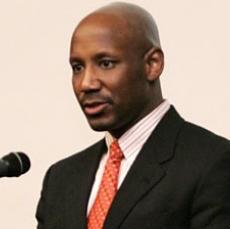Long Island in the Black Atlantic World
Why did Long Island have one of the largest enslaved populations in the North during the 17th and 18th centuries?
The first webinar event in the Jupiter Hammon Project roundtable series, presented in partnership with Weeksville Heritage Center, took place on August 15, 2020. The conversation addressed Long Island’s central role in an Atlantic economy dependent upon the enslavement of peoples of African descent, as well as identity, agency, and connection among the region’s free and enslaved communities.
Program Moderator
 Cordell Reaves serves as the Historic Preservation and Interpretation Analyst with the NY State Office of Parks, Recreation and Historic Preservation, developing educational programming and events that enable sites to tell complete and inclusive stories. His research interests cover a broad swath of New York State history, including colonial slavery, the Underground Railroad, the anti-slavery movement, and the Great Migration.
Cordell Reaves serves as the Historic Preservation and Interpretation Analyst with the NY State Office of Parks, Recreation and Historic Preservation, developing educational programming and events that enable sites to tell complete and inclusive stories. His research interests cover a broad swath of New York State history, including colonial slavery, the Underground Railroad, the anti-slavery movement, and the Great Migration.
Expert Panelists
 Jennifer Anderson, PhD, Associate Professor of History, Stony Brook University. She is the author of Mahogany: The Costs of Luxury in Early America (2012). Her current research focuses on Long Island’s complex history—from the 17th to the 19th century—as a venue of engagements among Native peoples, European settlers, and enslaved Africans that involved generations of conflict, adaptation, and innovation.
Jennifer Anderson, PhD, Associate Professor of History, Stony Brook University. She is the author of Mahogany: The Costs of Luxury in Early America (2012). Her current research focuses on Long Island’s complex history—from the 17th to the 19th century—as a venue of engagements among Native peoples, European settlers, and enslaved Africans that involved generations of conflict, adaptation, and innovation. Nicole Maskiell, PhD, Assistant Professor of History at the University of South Carolina. She specializes in family slaveholding networks in Anglo-Dutch colonial America. Her current book project is entitled Bound by Bondage: Slavery and the Creation of a Northern Gentry. It examines slaveholding ties that knit together Anglo-Dutch slaveholding families with Northeast, Southern, Caribbean, and European estates.
Nicole Maskiell, PhD, Assistant Professor of History at the University of South Carolina. She specializes in family slaveholding networks in Anglo-Dutch colonial America. Her current book project is entitled Bound by Bondage: Slavery and the Creation of a Northern Gentry. It examines slaveholding ties that knit together Anglo-Dutch slaveholding families with Northeast, Southern, Caribbean, and European estates.

Craig Wilder, PhD, Barton L. Weller Professor of History, Massachusetts Institute of Technology. He is a historian of American institutions and ideas and is the author of Ebony & Ivy: Race, Slavery, and the Troubled History of America’s Universities (2014) and In the Company Of Black Men: The African Influence on African American Culture in New York City (2005).



